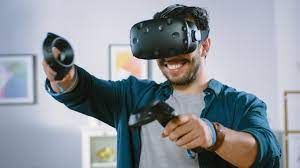
Gamification and Virtual Reality (VR) have emerged as powerful tools in various industries, revolutionizing the way companies engage with customers, train employees, and create immersive experiences. A case study that perfectly elucidates the synergy between gamification and VR is the training program implemented by Walmart to prepare their employees for Black Friday, the biggest shopping day of the year.
Titled “Black Friday in a Box,” the initiative by Walmart used VR headsets to simulate the intense and hectic environment of a store during Black Friday sales. Employees were able to experience a 360-degree view of the scenario, complete with virtual customers, crowded aisles, and the overall chaos that typically characterizes such events. The gamification aspect came into play with specific tasks and challenges embedded within the simulation. Employees had to navigate through the store, manage customer inquiries, handle checkouts efficiently, and restock items while managing time and maintaining composure — all within the virtual environment.
The results of Walmart’s VR training were compelling. Employees reported feeling better prepared and more confident for the real event. By exposing staff to the high-stress conditions in a controlled way, they could learn from mistakes without any real-world consequences. Furthermore, gamification elements such as scoring systems, instant feedback, and competitive scenarios made the training engaging and interactive. It encouraged a sense of accomplishment and motivation that traditional training methods often lack.
The success of Walmart’s VR gamified training program is indicative of virtual reality’s potential when coupled with gamification strategies to enhance learning outcomes. It provided an innovative solution for workforce preparation that was both effective in skill transmission and engaging for participants.
This case study demonstrates how integrating gamification with VR can create compelling experiences that not only entertain but also educate and prepare individuals for real-world challenges. As these technologies continue to evolve, we can expect to see more ingenious applications across different sectors that aim to benefit from their combined impact on learning, skill development, and user engagement.
